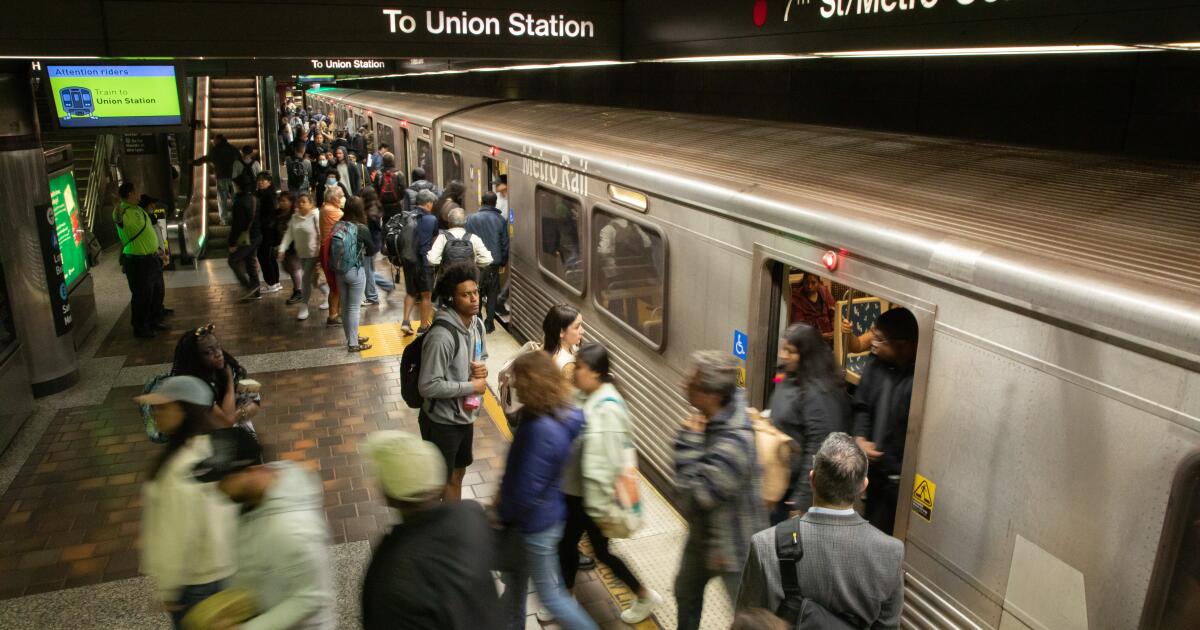A Metro train derailment occurred on Tuesday in downtown Los Angeles, causing significant delays in light rail service for approximately six hours during the busy evening commute. The incident took place at the 7th Street/Metro Center Station around 3:30 p.m., with the derailed train remaining upright, and thankfully, there were no reported injuries.
The Los Angeles County Metropolitan Transportation Authority (Metro) confirmed that by 9:45 p.m., normal train service had resumed after the disabled train was successfully removed. However, the disruption significantly affected the A and E Lines — two crucial routes within the Metro system.
The A Line, which connects Long Beach to Azusa, and the E Line, linking Santa Monica to East Los Angeles, experienced major interruptions. Services were halted at the 7th Street/Metro Center Station but also affected nearby stations, including Grand Avenue Arts/Bunker Hill Station, Historic Broadway Station, and Little Tokyo/Arts District Station.
Due to the derailment, the A Line was limited to operating between Long Beach and Pico Station, as well as from Union Station to Azusa. In a similar vein, the E Line was restricted to Santa Monica and Pico Station, and between Historic Broadway Station and East Los Angeles. Commuters were left scrambling for alternative transport options and faced long wait times as Metro worked to restore normal service.
The cause of the derailment remains under investigation, and Metro has not yet released further details regarding the factors contributing to this incident. Such disruptions highlight the challenges faced by urban transportation systems, especially during peak hours when ridership is at its highest.
Train derailments, while infrequent, can lead to significant operational struggles and affect thousands of commuters. In cities like Los Angeles, where public transportation is essential to reducing traffic congestion and promoting sustainability, even minor disruptions can ripple through the entire transit network. It serves as a reminder of the importance of maintenance, timely updates, and contingency plans for urban transport systems.
On social media, various users voiced their frustrations, sharing their experiences during the delay. Many called for improved communication and real-time updates from Metro regarding service changes and the status of transportation lines. The overwhelming sentiment was that timely information could significantly mitigate the inconvenience caused by such incidents.
As with any major transportation system, responsiveness to these kinds of situations is crucial for maintaining public trust and ensuring the satisfaction of riders. In light of recent events, it might be prudent for Metro to re-evaluate its emergency protocols and improve communication strategies to provide commuters with real-time updates during service disruptions.
In conclusion, the recent derailment in downtown Los Angeles underscores not only the vulnerabilities within urban transit systems but also the broader implications of service continuity for daily commuters. It highlights the continuous need for investment in infrastructure, the significance of swift response measures, and the importance of effective communication with the public. Moving forward, Metro and other transportation authorities must remain vigilant in their efforts to enhance the safety and reliability of their services to prevent such occurrences in the future.
Source link










